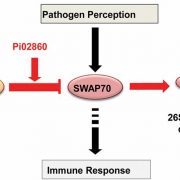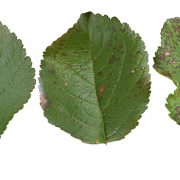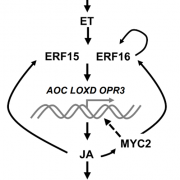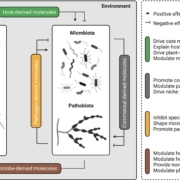The rust fungus Melampsora larici-populina expresses distinct sets of secreted protein genes during infection of its two host plants, larch and poplar
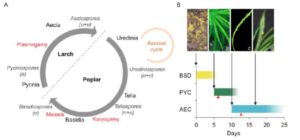 Rust fungi represent an important group of plant pathogens, many of which have heteroecious lifestyles (meaning that they require two alternate hosts). However, the molecular mechanisms used by these pathogens for suppression and colonization of multiple hosts are poorly understood. Lorrain et al. set out to dissect this in Melampsora larici-populina which infects two unrelated hosts, larch and poplar. The authors performed high-depth RNA sequencing of three developmental stages across infection of larch, and compared their data to available expression data during infection of poplar. This comparative transcriptomic approach highlighted subsets of genes expressed specifically or commonly on these different hosts. Genes encoding secreted proteins, including candidates for ‘effectors’, have highly dynamic and specific expression profiles specialized for each host. Hence, this study has illuminated new information about rust biology and identified genes contributing to host specificity in rust infections. (Summary by Amey Redkar) bioRxiv
Rust fungi represent an important group of plant pathogens, many of which have heteroecious lifestyles (meaning that they require two alternate hosts). However, the molecular mechanisms used by these pathogens for suppression and colonization of multiple hosts are poorly understood. Lorrain et al. set out to dissect this in Melampsora larici-populina which infects two unrelated hosts, larch and poplar. The authors performed high-depth RNA sequencing of three developmental stages across infection of larch, and compared their data to available expression data during infection of poplar. This comparative transcriptomic approach highlighted subsets of genes expressed specifically or commonly on these different hosts. Genes encoding secreted proteins, including candidates for ‘effectors’, have highly dynamic and specific expression profiles specialized for each host. Hence, this study has illuminated new information about rust biology and identified genes contributing to host specificity in rust infections. (Summary by Amey Redkar) bioRxiv




